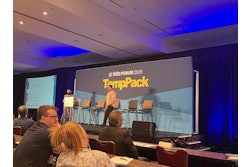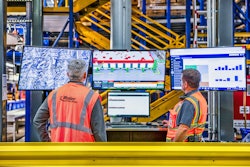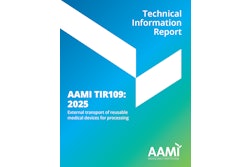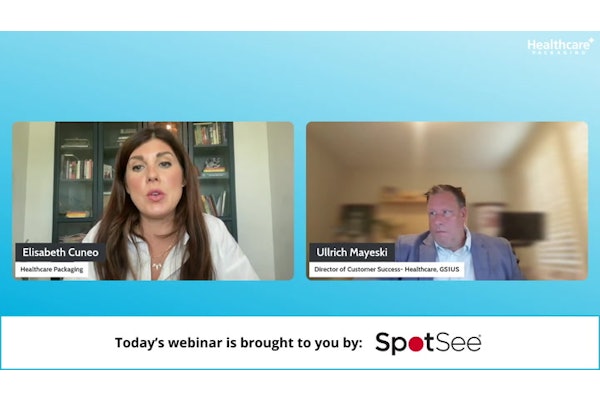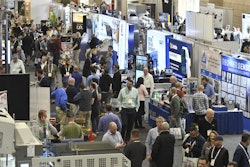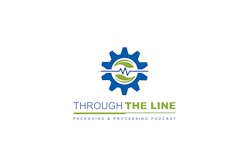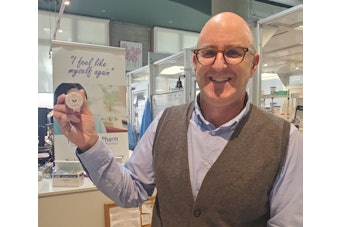Liz Cuneo 00:00:00 All right. Okay. Hello. I am here with Jeff Lander, director of Global Logistics Engineering at Moderna. And Paul DellaVilla, director of Digital Solutions and Services at Cold Chain Technologies. Thank you both for being here. The,
Jeff Lander 00:00:15 Thanks for having us.
Liz Cuneo 00:00:16 Oh, sorry. Yeah. Perfect. The topic of discussion is from a recent presentation you both gave at the isto forum specifically for temp pack. The title was Leveraging Realtime Tracking Location Data and Realtime Thermal Modeling to reduce Shipment risk. Um, so Jeff, if you wanna start, maybe just, you know, what the solution is, why Moderna was interested in adopting it.
Jeff Lander 00:00:39 Yeah, so thanks, Liz. So really the solution was centered around an Amazon Primes experience, right? As an industry, you know, we do a, a, a good job at doing some preventative guidance in terms of, Hey, we can model all different scenarios before shipment leaves, or we can take a large data set and do some, uh, you know, retroactive analysis of that larger data set. But where the big blind spot that we have as an industry is what happens in between, right? A shipment, leaves something gets delayed, misses a flight, uh, weather impact. Then we have that blind spot of what do we do? Do we intercept it? Do we let it ride? How long is my box that'll last if I get delayed? Um, and as a result, you know, we were able to, you know, leverage advanced thermal modeling by CCT to have better insights in our supply chain.
Jeff Lander 00:01:31 Oddly enough, that's not the whole reason why we did the program. The whole reason why we did the program, coming back to having an Amazon Prime ask experience where I know where my box is, I know when it's gonna be delivered. I know how long it's gonna last. Um, you know, the, the analysis that I often hear is, you know, how can Domino's tell me, you know, when my pizza's gonna arrive and it's gonna be when the temperature, but we're doing, you know, personalized medicine or biologics worth tens or hundreds of thousands of dollars, and we don't have such insights mm-hmm
Liz Cuneo 00:02:20 And is it fair to say, so both you and the customer are both able to track in a real time? It's for both of you?
Jeff Lander 00:02:25 Correct.
Liz Cuneo 00:02:26 Okay. Very cool.
Paul DellaVilla 00:02:29 And I think one of the points there, and, and I'll kind of add on that point, is the part of that we wanted to make sure is that each part of that group from a, uh, from us as a vendor standpoint, had the right amount of information. The vendor, the, the customer from the Moderna side has the right amount of tracking for what they need. The Moderna team has a wider array of information to allow them to make better decisions and per, and get the right information down to their customer. A pharmacist doesn't wanna know every single piece of detail of what's coming, but they need the right, right amount of information to kind of, you know, decide what to do with the, with the boxes when they get there.
Liz Cuneo 00:03:04 Okay, sure. And I know we mentioned, you know, being able to take action, you know, from these insights, but that's really on the Moderna side, you're, you're who's taking action, not the customer, not the pharmacist, um, necessarily. Is that fair?
Jeff Lander 00:03:16 Correct. Yes, that's definitely fair. So when we're, uh, in collaboration with CCT, we have a, a hyper gear or kinda white glove service around our shipments so that we're proactively intervening or co communicating to the customer, something's gonna be delayed. Uh, or if something needs to be intercepted, we're proactively communicating and or taking action. So trying to avoid anything arriving to the customer that can't be used.
Liz Cuneo 00:03:38 Mm-hmm
Jeff Lander 00:03:58 Yeah. So prior to the implementation of this, right? So, and during final mile, typically with Final Mile, kind of going direct to, to customer or let's say wholesale or distributors not direct to patients like you'd see like with a GLP one, typically those are no temperature monitored, or if they are, there was some either a chemical or an electronic indicator, which has a, uh, I would say a wide tolerance of, of outcomes in sense of like, education on how to use it. A lot of false positives with those types of devices. Uh, so what we were doing is we were inter introducing a real-time monitor that had, uh, information that you could assess, you know, as opposed to having a chemical indicator, which is essentially a chemical reaction, which is a color change that says, okay, it's a go no go device. Mm-hmm
Jeff Lander 00:04:52 And sorry, before I talk about the result, we didn't use temperature monitoring going back a couple of years. So the feedback that we had from our customers is, how do we know when it's going to arrive and how do we know my product's? Okay. Mm-hmm
Jeff Lander 00:05:44 So we were using that dynamic model to be able to say, okay, well, our box in a lab is qualified for 36 hours, however, it's a, we have a frozen product, it's the middle of November, that box realistically will last two, three, even sometimes four days longer than the worst case testing, which is like 95 degrees in the middle of July. Mm-hmm
Liz Cuneo 00:06:22 Oh, wow. That's great. Um, Paul, I don't know if you wanna weigh in on, you know, any of like how these specific things, specific things work or how they can be integrated for the, for companies you're curious about how to get started?
Paul DellaVilla 00:06:36 No, I, I, I think that though the fir the first step that for anybody wants to get started is, is really a, a, you know, companies need to have a, want to change how things are being done. We're a very slow industry to change. I, I think some of that is, you know, a lack of understanding what technology is out there. Mm-hmm
Paul DellaVilla 00:07:21 What can be done after there though, really requires companies to start to think outside the box with integrating things like realtime mon modeling. We can identify in real time if and when our box is going to fail. Most people aren't using that as a standalone method, though. They're utilizing it in conjunction with, you know, maybe an electronic indicator or tag. As Jeff mentioned. The ability to take though these real-time devices and integrate that into an entire service really allow us to try to take that, that product and move it away from that retroactive failure point to a point where you can do a lot of what Jeff said. And from that perspective, if customers are starting to look at that and they look at the entire total cost of ownership of the system, the cost of some of those technologies, which, you know, typically had been prohibitive mm-hmm
Paul DellaVilla 00:08:09 Uh, have come down to a point where they really do start to make sense in the last mile, as Jeff mentioned, a cell and gene therapy shipment, a shipment of a really high value two, $3 million type of product. It's easy to justify tracking or some of these technologies to be a little bit more proactive as we start to get into the supply chain. And what I would consider more standard, you know, maybe not lower cost, but on the, the lower end of the spectrum drug or for mass production, or getting to a point now where some of these technologies really can start to improve that entire supply chain. And to Jeff's point, you know, provide a better experience for pharmacists. You know, I, I played in both sides of the world, both, you know, working with pharmacy and their equipment on site as well as the distribution.
Paul DellaVilla 00:08:49 And in, and the one thing I figured out across the board is that pharmacists are focused on getting medicines to patients. They don't want arduous things that kind of take away from their day to day mm-hmm
Jeff Lander 00:09:19 Sure. And I mean, yeah. And I think just to, to add on, right, is, 'cause the question Liz was about how do other companies get started, right? In the common, I've spoken to a lot of different companies about this, and a lot of people have asked me questions on, well, how did you approach this? And how do you guys get started? Uh, and the two common themes that I see are not looking at again, right. Total cost of ownership, which is an absolute critical and pivotal part of this, right? Is understanding that. And typically as an industry, we are often siloed or incentivized by, you know, KPIs that don't incentivize total cost of ownership. So I've got a packaging spend, an IOT spend, and those are essentially two separate buckets. Uh, which if you look at the end up the end all, uh, total cost of ownership, then there's only so much juice then you can squeeze out of the, the packaging bucket itself, right?
Jeff Lander 00:10:05 There's a lot more in the logistics side of it. So, optimizing my shipment process, optimizing my shipment level, um, you know, essentially from a next day air to a second day air or even a ground point, that's where a lot of the, the money is. But, and quite frankly, to be able to do that, your packaging needs to be more robust. So you really need to look at it from a total cost of ownership and be willing to look at that. The other piece of it is, a lot of companies don't know where to get started. 'cause they try and boil the ocean too fast, identify your biggest pain, 0.1 or two pain points, and start small, get comfortable with it and expand from there. Right. Kind of the US was our kind of foundational model. Our, our pilot that we identified and then rolling it all globally into a wider footprint.
Jeff Lander 00:10:47 But a lot of companies try to boil the ocean too quickly, start with one or two key pain points, start small and then evaluate, run, get the data from there, and then expand based on kind of your, your use case. And the other thing that I will say is we weren't expecting, right? We went into this for this season, strictly looking at an enhanced customer experience. We weren't looking at, we weren't expecting to reduce intercept rate, right? We weren't expecting to be able to have, you know, uh, shipment level optimization, right? Looking at next day air to second day, air to ground point. We know that those, those benefits would come inherently. They were tough to quantify. So we went in from a customer experience perspective and we let the data tell the story. Mm-hmm
Liz Cuneo 00:11:38 Sure. Um, and so then, you know, have you labeled it as a success from a customer experience standpoint? Have you heard from customers or any feedback on, um, if it's improved their experience, you made their jobs easier?
Jeff Lander 00:11:51 Well, the, the biggest measure with that was looking at our call center, right? So our call center who gets inputs into the field from a complaint perspective requesting, uh, had reduced call volume. Um, I believe the number was by over 70%, right? In terms of call input, right? In terms of, because again, the device, the whole customer experience, super simple, requires no customer engagement. You've got a greener red light, you know, if you don't hit the stop button on it, you've got a light sense that automatically turns it off. So I require, so we require no customer engagement, simple go, no go, very thin device. So again, the proof is in the data and it comes down to, you know, we did a lot of different test shipments and Paul can, can elaborate, right? That we went through multiple phases just from connectivity to customer experience. We did a pilot with some key customers before rolling this out. Uh, and it's been an overwhelming success both from our, uh, shipment success, right? Intercept rate reduction, uh, shipment level optimization possibilities, and then also just the customer experience and reduction in call volume into our contact center to relate it to temperature, excursions and, and failures. So overwhelming success.
Liz Cuneo 00:13:04 Yeah. That's great. Um, I was gonna ask, you know, the tangible benefits, um, but I think you just kind of listed out, you know, what, um, what you guys have seen. So it's not just, you know, intercept rate improvement, customer experience, um, less waste, I'm assuming in product itself. Yes, for sure. Yeah. Mm-hmm
Jeff Lander 00:13:26 And that, and that's the thing too, right? And that inherently comes with intercept rate. 'cause every time I have to intercept that shipment, then I'm going through a replenishment process. I'm having to, I have additional, uh, you know, carbon footprint, shipping everything again right next day air at that point. So then having to send a second shipment next day, air, getting a shipment back, uh, going through the destruction process, it's like, I need to be intercepted. So a huge reduction in waste, which is inherently, uh, happens when you reduce your intercept, uh, or reject rate.
Liz Cuneo 00:13:55 Sure. That's awesome. Um, so Paul, I don't know if you, you know, wanna share or can share a little bit about how some of the technology works or if it's, you know, maybe too, too high level, but just a little bit more on like, you know, how how it works and what, you know, what people could expect or,
Paul DellaVilla 00:14:12 Yeah, I, I think there, there was, I would say one or two pieces of novel technology that we, we utilized with this, but the majority of it was the right combination. The technology at the same point, you know, you know, Jeff and I talked about this when we started this pro project. You know, you can track your pizza, you know, from oven to shipping all the way through with dominoes. That technology exists in the market. We all know when our ham and John packages are showing up. So it's taking that technology and then pairing it with, you know, the overlay of that real time tracking, again, a technology that exists in the market, finding the right fit of getting the right data through, and the, you know, the right cost level was a part of it. But those were two existing pieces of technology that we packaged in the right way to try to again, improve that, uh, end customer piece.
Paul DellaVilla 00:15:00 What we brought to the table, which is I do think that's something new in the market, is the ability to parlay the logistics information, the tracking information we get from the data logger, and then information from weather that we're getting from different sources in there to predict when the box is gonna fail. Yeah. So each of those pieces offer, you know, a very unique set of values, but when you pair them all together, the sum of the hole is far more than the sum of the parts in that piece. So, you know, really it's, you know, when you're looking at a customer supply chain, you know, Moderna had a very specific use case we've worked through, but any of the customers we work with across the lane, we try to find the right pieces of technology and pair them together for their supply chain. Moderna has one way. We have other customers that have taken different pieces of that and utilize it to improve their own supply chain. And depending on what kind of their value prop is the drug, how much risk they have, we're able to kind of build out different ways to help build out that end user experience. It'll look different for most customers in the supply chain, but it's, you know, about kind of picking those right pieces of technology that either are somewhat new, but or exist in other places and packaging them together.
Liz Cuneo 00:16:08 Okay. So how long do you think this technology has been been being utilized by pharma? Or maybe this is brand new, or like, you know, how long have, uh, has the industry been tapping into weather, um, predictions, or,
Paul DellaVilla 00:16:21 It's very rarely right. Okay. To, to be very honest, I would say, you know, we, we, we kind of lean on it as a pivot point. The pandemic forced people to start looking at things differently. You know, I I would say that for a very long time, people have done a very un unscientific way of looking at weather. Is it hot today? Oh, it's hot. I'm gonna put more gel packs in my box. That's a very archaic way of doing it, starting to take that information and to take a more scientific approach to, I'm shipping this way, or it's this temperature currently in it, it's gonna be this temperature. The origin destination is really just starting to make its way into supply chain. Not that the data didn't exist, but people are starting to invest the technology and tools to incorporate it into the supply chain. I, I think that lift and that incorporation into those existing supply chains is more of a, more of a lift than us utilizing the technology themselves. Okay. We had a, you know, a really unique opportunity with Jeff and their team. They were building a commercial supply chain for really the first time. So we got to build it right from scratch. Some of our other customers are kind of, I wouldn't say handcuffed, but stuck with existing systems so that Lyft to integrate to new technology can somewhat be a little bit harder.
Liz Cuneo 00:17:36 Okay.
Jeff Lander 00:17:38 Yeah. So, yeah, I would just, I would just add right, that it, it really comes down to being able to, right? A lot of the existing data sets, this, this, so I would say in terms of the, the, the data sets being driven, there's really nothing new there. It's tying them all together in a, in a logistic, in a, in a logical way that makes it dynamic, right? It's pulling it all together, right? And that's where, uh, call it the secret sauce is, is taking the pieces, the different pieces of the puzzle and putting them together and making them talk in a way that gives 'em meaningful output, right? So historically where, uh, modeling and simulation were used and ambient weather data were used, uh, was more on a reactive approach where, hey, something got sent to a customer, it didn't get intercepted. Is there gonna be potential, uh, quality impact with that?
Jeff Lander 00:18:27 Or some kind of critical quality impact, you know, of that, uh, with that product. So if that didn't get intercepted to get to a customer, you know, then you'd run a, then you'd run a simulation on that to say, okay, well here's, here's what we would expect it, here's kind of our confidence interval. Well, we were doing that as an industry reactive, as opposed to using technology proactive and dynamically to be able to help in transit. So, you know, so go back five, 10 years, something gets delivered to, uh, CVS, and there was an identify excursion. Somebody didn't quarantine it, or a pharmacist didn't quarantine it. They, uh, you know, went through with an inoculation, and then it came after the fact. Then you would run essentially a simulation to understand was there a potential adverse event, product quality impact. And you'd do that retro, you know, reactively as opposed to proactively the data was there, you know, the last, you know, of years, but now it's pulling it all together in a dynamic approach that is taking different pieces in different segments and tying them together.
Jeff Lander 00:19:30 So that's just one example where we've been, you know, running a simulation is nothing, you know, new Yeah. But running it proactively running it, you know, as opposed to in a, in a 1D versus 3D, right? I, we won't get into the technical aspects, but being able to do it faster, more efficient, more effective. Also teaching and learning the model with data. So it really comes down to driving data. Uh, and as long as you use it properly, the more data, or as long as you're able to help the model learn by ingesting the data kind of correctly, and mo and, and managing it, then you become more impactful, more insightful, more accurate over time.
Paul DellaVilla 00:20:10 And I, I think that that's one of the new technology pieces that is the underlying piece, right? You know, I, I, I hate the buzzword, um, with of ai that gets thrown around everywhere, but, you know, machine learning models are really a subset of that technology, and they're becoming more and more useful in, in the pace. I don't talk about AI as something that's doing your job for you. It's the ability to very quickly analyze, look at large data sets, and help guide people to the right decision. And I think that's one of the things that's helping reinforce these tools from, you know, outside of the underlying technology that's helping the customers and the emails, those notifications, the monitoring piece. Okay. So the, the kind of the backend technology that's driving this is another thing that's helping perpetuate this forward pretty quickly.
Liz Cuneo 00:20:56 Okay. Yeah. Interesting. Um, Jeff, kind of last question. You know, they talked about it is the, someone brought up, um, like this boom in refrigerated biologics and pharmaceuticals and, um, you know, some of the more popular auto-injector style drugs, you know, is that your experience? Have you seen an uptick in, in, um, you know, cold chain and refrigeration requirements? And is that, you know, does that have any weight in your decision to, to use this kind of technology?
Jeff Lander 00:21:24 Yeah, I mean, it's, it's driven by, uh, Chris Anderson's, uh, yes. Presentation at ista. You know, cold chain medicines especially, uh, have been on significantly on the rise, right? You're gonna look at any research paper, HDA, you know, in terms, I mean, there's a lot of research papers even the last year or two years that have predicted the growth of, of cold chain medicines, uh, you know, substantially, you know, now, but also into the future. And I see a huge opportunity, right? Especially going direct to patient. I can tell you right now, that's definitely an underserved or under watched area going D two P, especially with the boom of the GLP ones, the glides, right? With, with Novo and Lilly, uh, and you're talking about a huge number of, of volume of shipments. So I can see this type of technology being utilized in, in used there.
Jeff Lander 00:22:20 Um, so, but just, not even just there. But that's definitely one, I would say the more focused area that this will, this will come, I think, uh, in just kind of foreshadowing or just kind of projecting that, given the scrutiny and the, the watch on it and the news, same thing for us kind of during covid and the covid boom every, right. Nobody knew what cold chain was until Covid, right? Mm-hmm
Paul DellaVilla 00:23:12 And I, I would agree with that. And, and I think part of that comes to what we talked about in the earlier piece of this. As these things go up and they become wider, there's more of a focus on efficiently getting them to patients. There's enough cost in, in the medication world on patients as it is, we wanna try to lower that from a logistics standpoint. Mm-hmm
Jeff Lander 00:23:57 Yeah. And just, and just to clarify, right? I see a huge opportunity, not necessarily with, with data loggers on the inside, but you generate enough shipments and you generate an accurate enough model where, uh, you can, you know, get a, an accurate, you can, you can do, you can go through, uh, and improve the model accuracy by the larger dataset that you generate, and then therefore you can increase your accuracy of your, of your thermal model and your simulation. So that way if you can get to within maybe a 5%, uh, accuracy, then you might be able to build in a safety factory with that, uh, and not even use a 10 monitor at all. Right? But you're generating the data, you're going through, uh, kind of the, a machine learning model to improve the accuracy of that data or that, that model over time.
Jeff Lander 00:24:47 I think the future is either having some sort of ambient sensor on the outside, maybe like an applied label that you can get ambient weather data and based on the actual ambient weather data, whether it was sitting in the back of a truck, whether it was in the airline, whether it got delayed on somebody's doorstep. 'cause you don't get the granularity when you're tooling that API, uh, right now from weather data. Mm-hmm. You don't get the granularity of that shipment. So there's obviously some, uh, variances that go into, or assumptions that are made when pulling, you know, weather data in certain locations. But if you can, I think the future is you have some sort of tag, right? Uh, an applied like shipping label on the outside that's measuring data and based on the accuracy of the model that you generate over time, right? The, the enhanced accuracy over time.
Jeff Lander 00:25:31 Then I might have a label on the outside that cut me a couple of cents or, or a dollar, and then I don't need to monitor on the inside because I've got an accurate enough, uh, thermal model. So I can see that being the future of kind of this program. So not necessarily needing a device on the inside mm-hmm. But having a truly cost effective device on the O side that increases my accuracy of the model and therefore, uh, not needing a device on the inside, which actually will be more robust than having some sort of tag alert or chemical indicator, which are typically, uh, have a wider tolerance or accuracy range. And quite frankly, trying to educate the customer on how to use it, not a great customer experience. And you're gonna have the inherent returns and rejects, uh, from somebody that takes out their meds, put it in the fridge, and they come back to it.
Jeff Lander 00:26:14 So it's something that has a big red X on it and have no way to troubleshoot that. Sure. Uh, you know, I used to, I used to see that all the time prior to Moderna, uh, working with a lot of, uh, specialty pharmacies, mail order, specialty pharmacies, fertility pharmacies, uh, you know, and you had some, some reject rates, you know, five, 10% because of those type of, when you were using those types of indicators mm-hmm
Paul DellaVilla 00:27:14 See the feature. No, I, I, I think, I think you cover, I think, again, a lot of different ways to approach this way. And, you know, Jeff's got one view, and I think it's an extremely valid one. We have other people who are looking at different ways. It's finding the right way to cobble together these different pieces of technology for your specific supply chain. Mm-hmm
Paul DellaVilla 00:28:09 And if you take that kind of, you know, fast failure, fast implementation approach, which is often not something you'd see in the pharma space, you can still ensure really good patient safety while implementing really valuable systems that all drive value down the line. So, you know, there, there's a, a lot of good things that, a lot of good learnings and things that came out of this project that we're trying to, you know, kind of evangelize a little bit in the space in terms of technology adoption, ours or other people, you know. Sure. This is, this isn't just a cold chain technologies item. This is a, this is the type of thing that can approach impact the industry as a whole.
Liz Cuneo 00:28:45 It, it is safe to say it's not just for companies as big as Moderna. I'm hearing there's opportunity for, you know, smaller or different sorts of companies to adapt something like this.
Paul DellaVilla 00:28:54 Yeah, a absolutely. And again, it comes to company profile and the information they have. The smaller the company, especially earlier stage ones, we typically have less stability data. So there, there, you know, there, there are some, there are different levels of risk that factor and how we're doing this. And that again, drives how we're looking at technology that might be utilization of a certain, uh, shipping level with a carrier. It might meet a more robust package. It might mean a different type of technology that's using from a prediction standpoint. But again, that goes into helping design the right supply chain for the right customer. Uh, yeah, as Jeff said, we've had, he's spoken to some other customers who are looking at, done, done some other places, and, you know, really it's a great model for what can be done. Everybody's gonna kind of put their own spin and flavor on it based on how their, their company utilizes it.
Liz Cuneo 00:29:44 Sure. Sounds like there's a lot of opportunity. That's great.
Jeff Lander 00:29:48 Yeah. De definitely a lot of opportunity, a lot of o opportunity to for customization too, right? Because again, our model, like, like Paul was saying, fits kind of our requirements in our use case. And that was, that's often one of the things that I stress to people is that this is, this is just a template, but not necessarily the end all be all right. Mm-hmm
Liz Cuneo 00:30:37 It's words of encouragement for everyone here. Right. For almost any task. Start small, figure out the big biggest little change you can make and, and get some momentum from there. So it's great. Well, thank you both for this. Um, this was a great discussion. I appreciate your time.
Paul DellaVilla 00:30:52 Likewise. Uh, thank you for inviting us. It's
Jeff Lander 00:30:54 Great talk. Yes, absolutely.
Liz Cuneo 00:30:56 Thanks.



